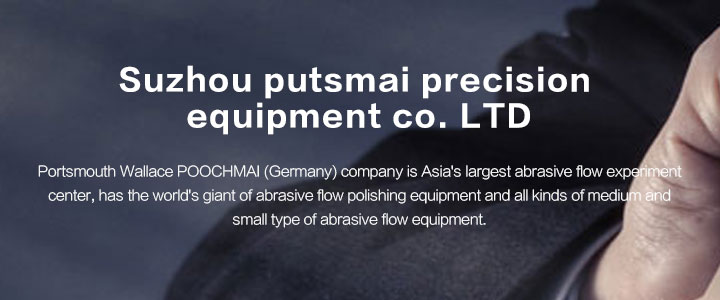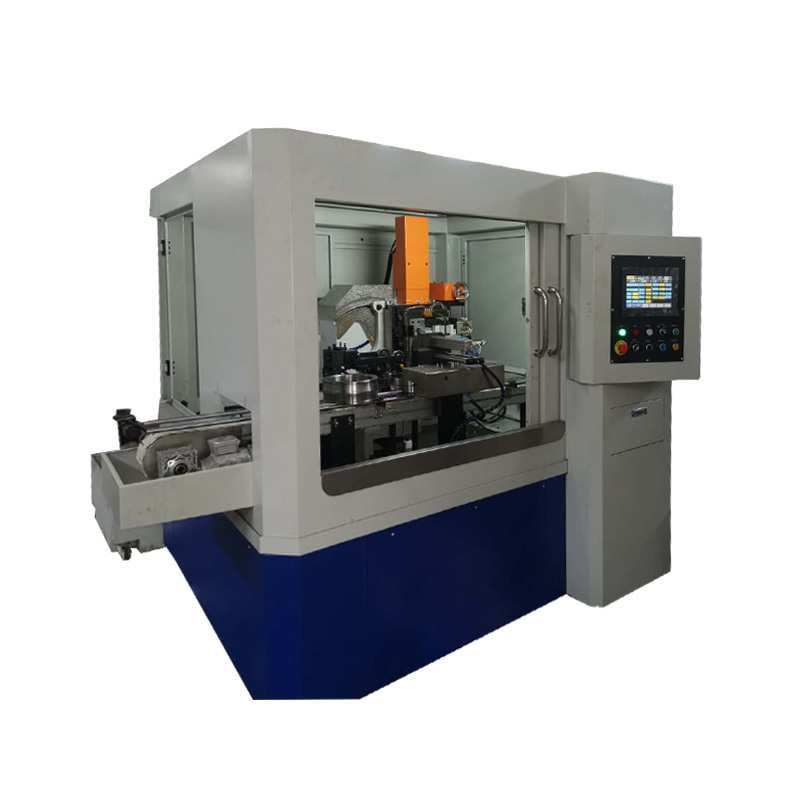


Secondly, abrasive
It is made by mixing a semi solid carrier with viscoelasticity, softness, and cutting ability with a certain amount of ground sand. The viscosity of different carriers, types of abrasives, and particle sizes of abrasive flow manufacturers can produce different effects. Commonly used types of abrasives include silicon carbide, cubic boron nitride, alumina, and gold steel sand. The size of sand particles ranges from 0.005 to 1.5mm. High viscosity abrasives can be used for uniform grinding of the walls and large channels of parts; Low viscosity abrasives are used for grinding corners and small channels of components;
Thirdly, fixtures
Position the parts and guide the abrasive to the processed area, blocking areas that do not require processing.
There are many factors that affect the smooth completion of the abrasive flow manufacturer's processing of parts and achieve good processing results. In addition to equipment, it also includes the selection of abrasives, the size of extrusion pressure, the number of cycles, and the reasonable design of fixtures.
Advantages: Squeeze grinding is a micro removal of metal materials, deburring and rounding of the intersecting parts of the inner cavity of the parts, achieving the goal of fine machining. Abrasive flow machining has precision, stability, and flexibility. Widely used in the automotive industry and various manufacturing industries. Its fundamental advantage is that it can access complex and difficult to access parts; The polished surface is uniform and complete; The processing effect of batch parts is repeated and consistent. These processing characteristics have improved the performance of the parts, extended their lifespan, and reduced the need for manual labor, greatly reducing labor intensity. When manually polishing the inner surface of an automobile intake pipe, it can only be cut open, polished, and then welded together. By using abrasive flow machining, internal surface polishing can be completed without the need for cutting and opening. In addition to being a polishing method, abrasive flow technology can also perform micro grinding on parts with extremely strict surface shape tolerances and quality requirements.
Application: Abrasive flow machining is suitable for processing different parts and sizes. Small holes as small as 0.2mm or gears with a diameter of 1.5mm, spline channels with a diameter as large as 50mm, and even turbine impellers with a diameter of 1.2m. Machine tools for processing large parts can be equipped with rotary arms or conveyor tracks.
This process has been widely used for precision machining of automotive components: intake and exhaust pipes, intake valves, boost chambers, injectors, fuel injectors, cylinder heads, turbine housings and blades, splines, gears, brakes, etc. For example, rough cylinder head castings can produce up to 30 pieces per hour on a dedicated two station abrasive flow production line, with a roughness ranging from Ra4 μ M or Ra5 μ M reaches Ra0.4 μ m. It can reduce exhaust emissions by 7%, increase engine power by 6%, and increase driving mileage by 5%.
In recent years, the micro hole abrasive flow machine tool developed has become unique in processing fuel injectors. It performs complex programming operations based on the relationship between extrusion pressure, abrasive temperature, and viscosity. During the machining process, when the set flow rate of the fuel injector reaches, the machining automatically stops. The processing time is about 10 seconds, and the flow deviation can be controlled within ± 1%. Accompanying this processing equipment are flow testers and high-pressure cleaning equipment. These devices can be provided with single or multiple workstations according to user needs. It can also be a complete system with a robotic arm connection, including processing, measurement, and cleaning.
Electrochemical deburring
The roughness and burrs at the intersection of channels within the parts have always been a headache. Chemical deburring of household appliances in abrasive flow factories is a good way to solve these problems. This technology involves using a forming fixture to process selected parts of the workpiece. The electrolyte that is connected to the current passes between the workpiece and the fixture, instantly dissolving the burrs and removing them. At the same time, uniform and accurate chamfered edges are generated at the intersection of the inner channels. The processing time is generally between 10 seconds and 30 seconds. Most workpieces use multiple electrode head fixtures to achieve higher work efficiency. The removal amount depends on the amount of current between the workpiece (positive electrode) and the fixture (negative electrode). The electrode head is usually designed to be in a shape corresponding to the surface of the workpiece. Automatically and selectively perform deburring operations on parts made of metal materials. It can be widely used for deburring processing of pump bodies, valve bodies, connecting rods, plunger needle valve pairs and other parts made of different metal materials in industries such as pneumatic, hydraulic, engineering machinery, oil nozzle pumps, automobiles, engines, etc.